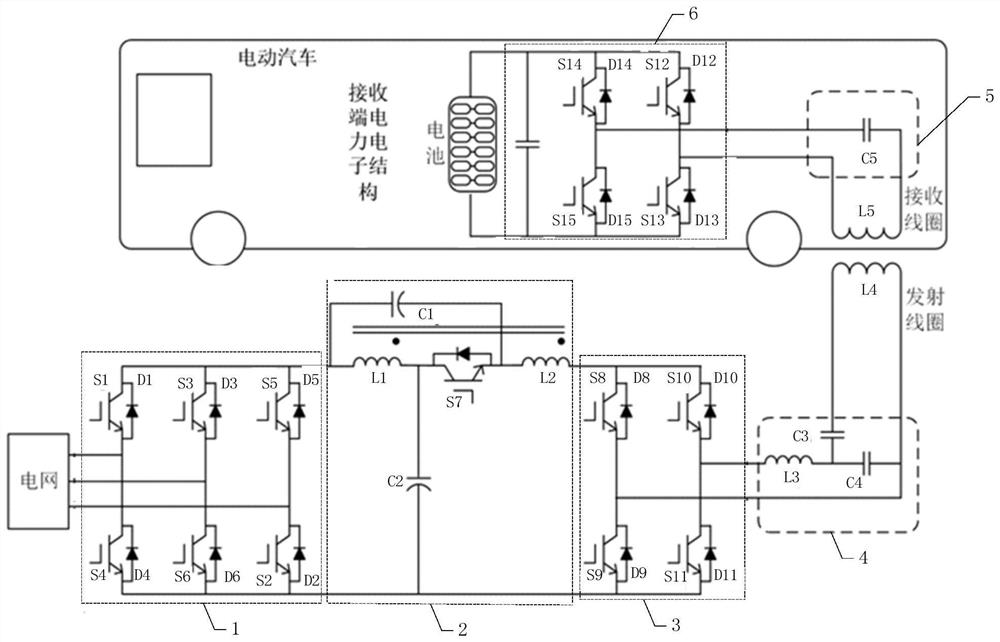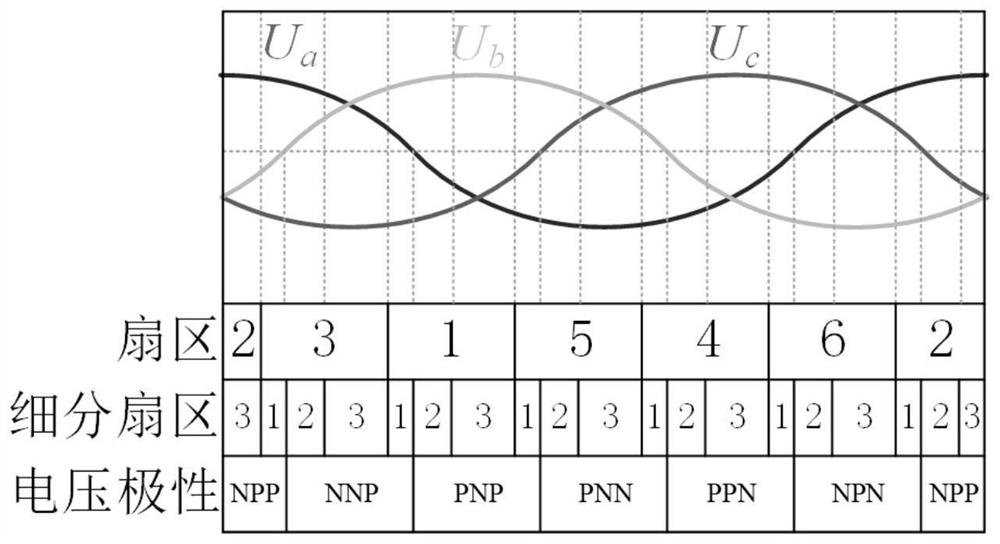Topological structure and modulation method of two-way wireless power transmission for electric vehicles
A two-way radio, electric vehicle technology, applied in electric vehicle charging technology, electric vehicles, power management and other directions, can solve the problems of huge harmonic content of the power grid, affecting power quality, and inability to realize batteries, reducing current harmonic content, The effect of reducing switching losses and improving grid quality
- Summary
- Abstract
- Description
- Claims
- Application Information
AI Technical Summary
Problems solved by technology
Method used
Image
Examples
specific Embodiment approach 1
[0045] Specific implementation mode 1: refer to figure 1 Specifically describe this embodiment, the electric vehicle two-way wireless power transmission topology structure described in this embodiment, the topology structure includes a transmitter converter and a receiver converter,
[0046] The transmitter converter includes a unit power correction module 1, a quasi-Z source converter 2, a high-frequency inverter module 3, a transmitter LCC type compensation network 4 and a transmitter coil,
[0047] The receiver converter includes a receiver coil, a receiver compensation network 5 and a bidirectional controllable rectifier bridge 6,
[0048] The unit power correction module 1 is used to perform power factor correction on the AC power output from the grid, and the corrected DC power is transmitted to the quasi-Z source converter 2, and is also used to perform power factor correction on the boosted DC power to obtain the corrected DC power. AC transmission to the grid;
[00...
specific Embodiment approach 2
[0055] Embodiment 2: This embodiment further describes the two-way wireless power transmission topology of electric vehicles described in Embodiment 1. In this embodiment, the unit power correction module 1 is composed of 6 switch tubes and 6 diodes The three-phase full-bridge inverter circuit.
[0056] In this embodiment, the circuit structure of the unit power correction module 1 is as follows figure 1 shown.
specific Embodiment approach 3
[0057] Embodiment 3: This embodiment further describes the two-way wireless power transmission topology for electric vehicles described in Embodiment 2. In this embodiment, the quasi-Z source converter 2 includes capacitors C1-C2, coupled inductors L1- L2 and switch tube S7,
[0058] The positive output end of the unit power correction module 1 is connected to the positive electrode of the capacitor C1 and one end of the coupling inductor L1 at the same time. One end of the inductor L2 and the negative electrode of the capacitor C1, the other end of the inductor L2 is connected to the positive input end of the high frequency inverter module 3,
[0059] The other end of the capacitor C2 is connected to the negative output end of the unit power correction module 1 and the negative input end of the high frequency inverter module 3 at the same time.
[0060] In this embodiment, the circuit structure of the quasi-Z source converter 2 is as follows figure 1 shown.
PUM
 Login to View More
Login to View More Abstract
Description
Claims
Application Information
 Login to View More
Login to View More - R&D
- Intellectual Property
- Life Sciences
- Materials
- Tech Scout
- Unparalleled Data Quality
- Higher Quality Content
- 60% Fewer Hallucinations
Browse by: Latest US Patents, China's latest patents, Technical Efficacy Thesaurus, Application Domain, Technology Topic, Popular Technical Reports.
© 2025 PatSnap. All rights reserved.Legal|Privacy policy|Modern Slavery Act Transparency Statement|Sitemap|About US| Contact US: help@patsnap.com



